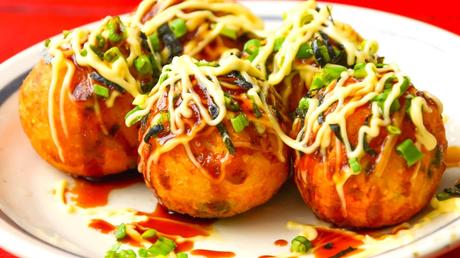Japan is home to one of the world’s most diverse cultures. From her traditions to its cuisine, Japan has inspired variants of its own ways in multiple other countries – some of which have actually gone on to become staples in many households!
If we’re talking about inspiring other cultures, perhaps the predominant inspiration would come from food. Japan is a cultural hub for Asian street food, such as Yakitori, Imagawayaki, Ikayaki, and of course Takoyaki.

How to Make Filipino-Inspired Takoyaki Pinoy Style
Japanese and Filipino cuisines have a close relationship in terms of ingredients and cooking methods, albeit differences in terms of taste. Takoyaki might have taken origin in Japan, but Octopus Balls (as they’re referred to in English) have become a street food of its own in the Philippines – and today we’ll be learning more about them and how to make them.
 Print
Print
Takoyaki Recipe Pinoy Style From the Philippines
While vinegar and soy sauce might be a staple in Filipino dishes, it’s more of a condiment in Japanese dishes. Course SnackCuisine FilipinoKeyword octopus, Takoyaki Prep Time 10 minutesCook Time 15 minutesTotal Time 25 minutes Servings 4 people Author Joost Nusselder Cost $5Ingredients
- 1 cup Takoyaki Flour
- 500 ml Water
- 1 Egg
- ¼ cup Boiled octopus cut into cubes
- ⅓ cup Panko breadcrumbs or Tenkasu
- 1 tsp patis (fish sauce)
- Green onions (optional)
- Nori flakes (optional)
- Mayonnaise (as required)
- Takoyaki sauce (as required)
Instructions
- Preheat and grease a Takoyaki pan.
- Combine Takoyaki flour with the egg and water to create a batter. Once you reach a homogenous consistency, transfer the batter into a squeeze bottle, piping bag, etc as per convenience.
- Mix the filling ingredients together, the octopus with fish sauce and if you have it, the green onions cut into small pieces and the nori flakes as well.
- Pour batter into the mold up to the brim. Add in the filling immediately (the octopus).
- While the batter is slightly cooked, but moldable mold it into the shape of a ball until the ball is brown. With a designated takoyaki maker this is easily done by turning the balls in the round holes.
- Transfer the balls once they're brown all around into a dish. You can top with your favorite toppings, serve it with your favorite condiments and you're done!
Also read: these are the best takoyaki pans and makers to get you started
The History of Takoyaki
In 1935, Tomekichi Endo popularized a Summer festival favorite in the streets of Japan, the Takoyaki. In the simplest of terms, Takoyaki consists of octopus meat in the center surrounded by fluffy dough. The word ‘yaki’ is a popular suffix in Japanese street food terms and translates to a cooking method of either frying or grilling.
Eventually, all of Japan was made aware of a street vendor in Osaka’s ingenious street food invention. Although, Tomekichi had actually created a variant of another popular dish (the Choboyaki) instead of creating a dish of his own. The prototype was supposedly more rectangular and less flavorful than what Tomekichi conjured.
Regardless, people in Japan were raving about Takoyaki! So much so in fact that today you can expect to find Takoyaki not just at festivals, but in convenience stores, fine dining, and even in households.
Takoyaki is therefore a dumpling filled with a baby octopus at its center along with cabbage, spring onions, and pickled ginger. Every household and vendor has its own variant, but these are the basic ingredients. The dumpling is then cooked in a special pan known as the Takoyaki pan and served with, you guessed it, Takoyaki sauce.
Comparing Japanese and Filipino Cuisines
Asian cuisine takes on inspiration from several countries; from Indian spices to Japanese ingredients, and even from countries in other continents such as Europe and America. The principle difference between Japanese and Filipino cuisine is that the latter takes its inspiration from Spanish and Chinese dishes.
Most Filipino dishes, such as coccidia, Arroz ala valencia, paella, and Miki bihon utilize sweet and sour flavors by incorporating local kinds of vinegar and soy sauces in their dishes. Their cooking methods usually involve frying or grilling the components together to create a dish.
Japanese food on the other hand relies on milder and more natural flavors. While Filipino dishes want to bring out an overall flavor of the dish, Japanese dishes focus on enhancing natural flavors with minimal (if any) contortions.
Therefore, while vinegar, fish sauce (patis), and soy sauce might be a staple in Filipino dishes, it’s more of a condiment in Japanese dishes.
Also check out our recipes here to learn how to make traditional Japanese takoyaki
Conclusion
Asian cuisines take on inspiration from one another, which is why Asia is quite often referred to as the world hub flavor. Takoyaki is a Japanese street food that’s found its way into the homes and hearts of Filipinos. The dish is simple, easy, and delicious.
Also read: can you make takoyaki in the air fryer?
